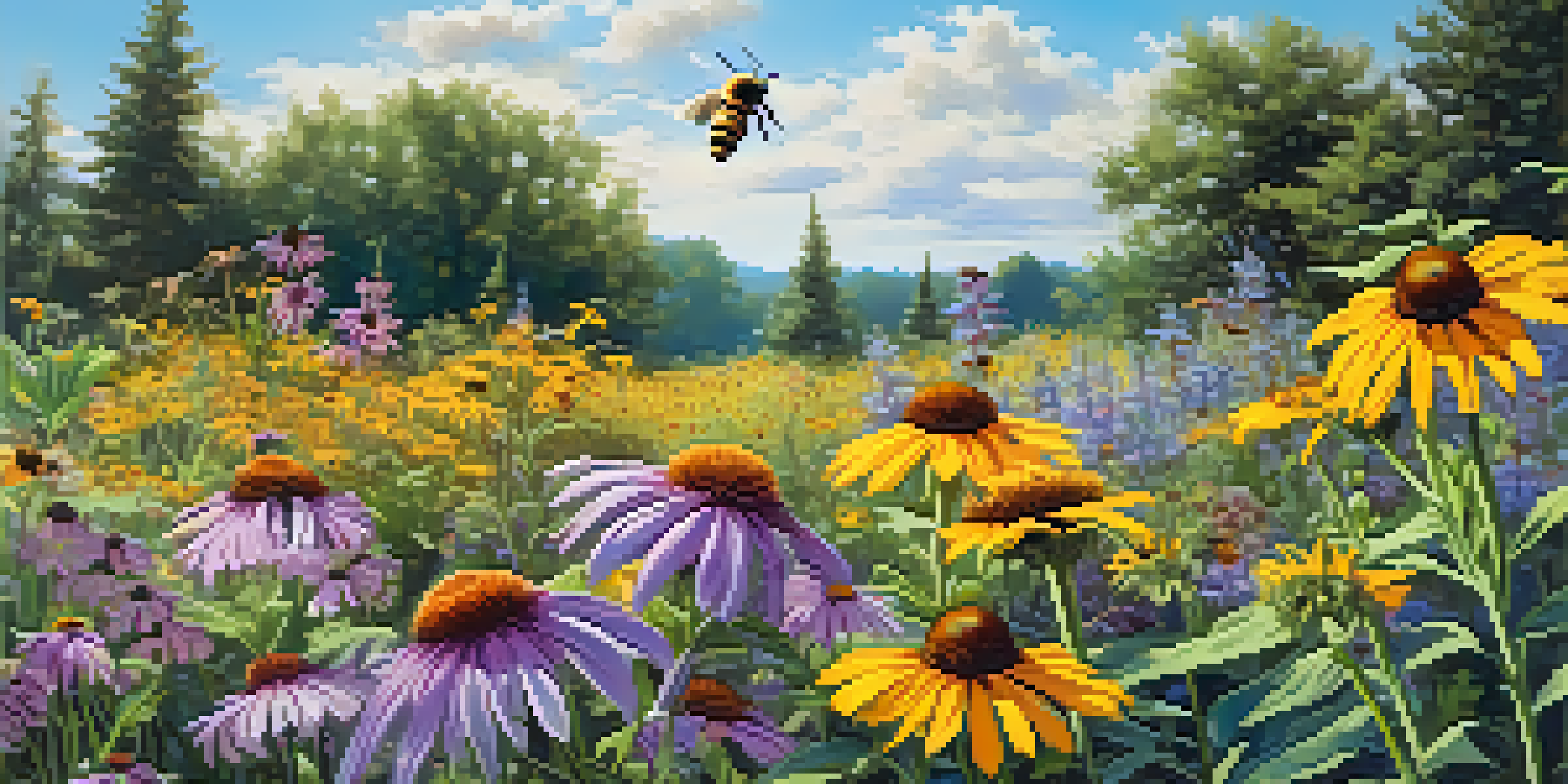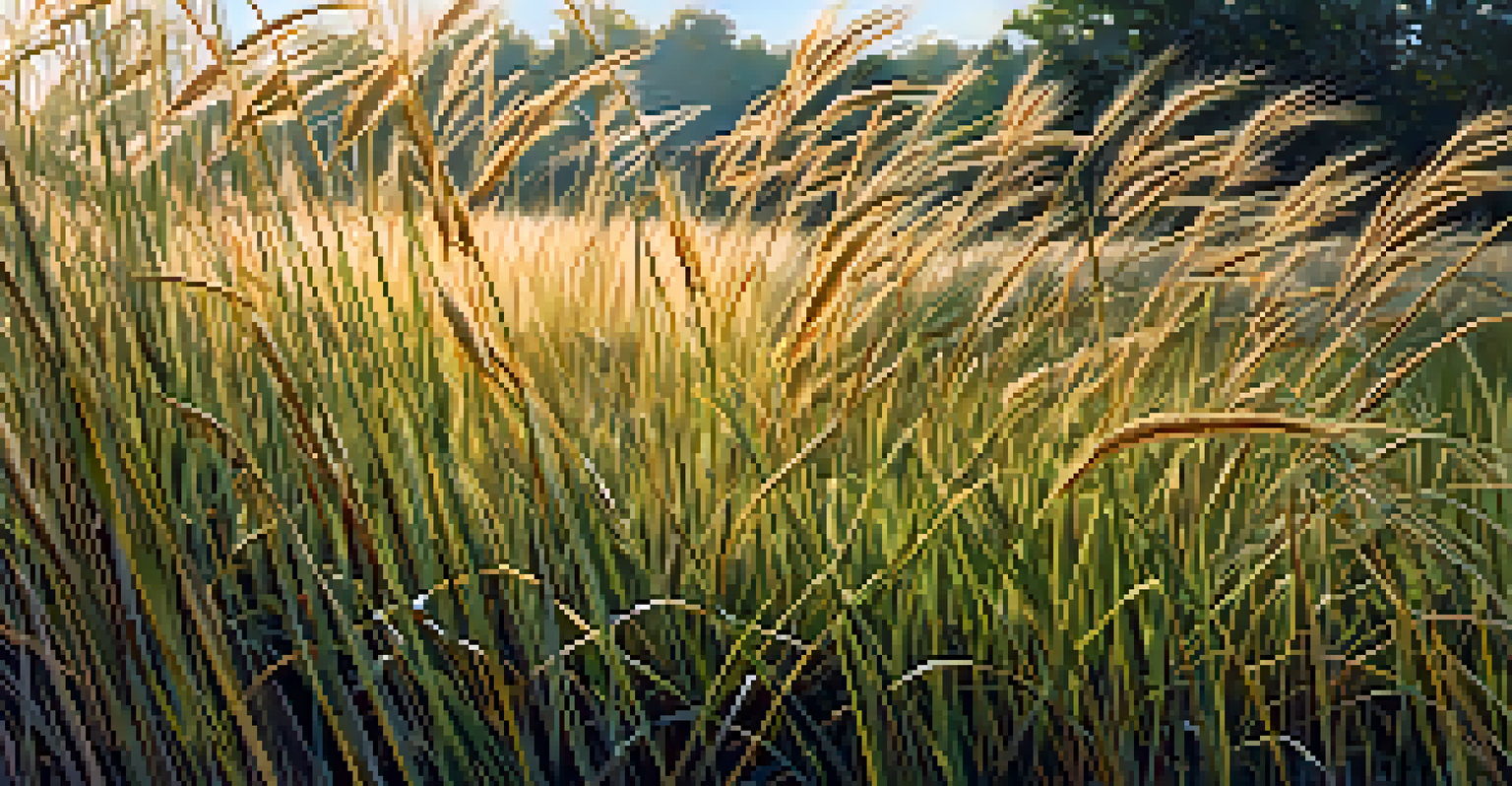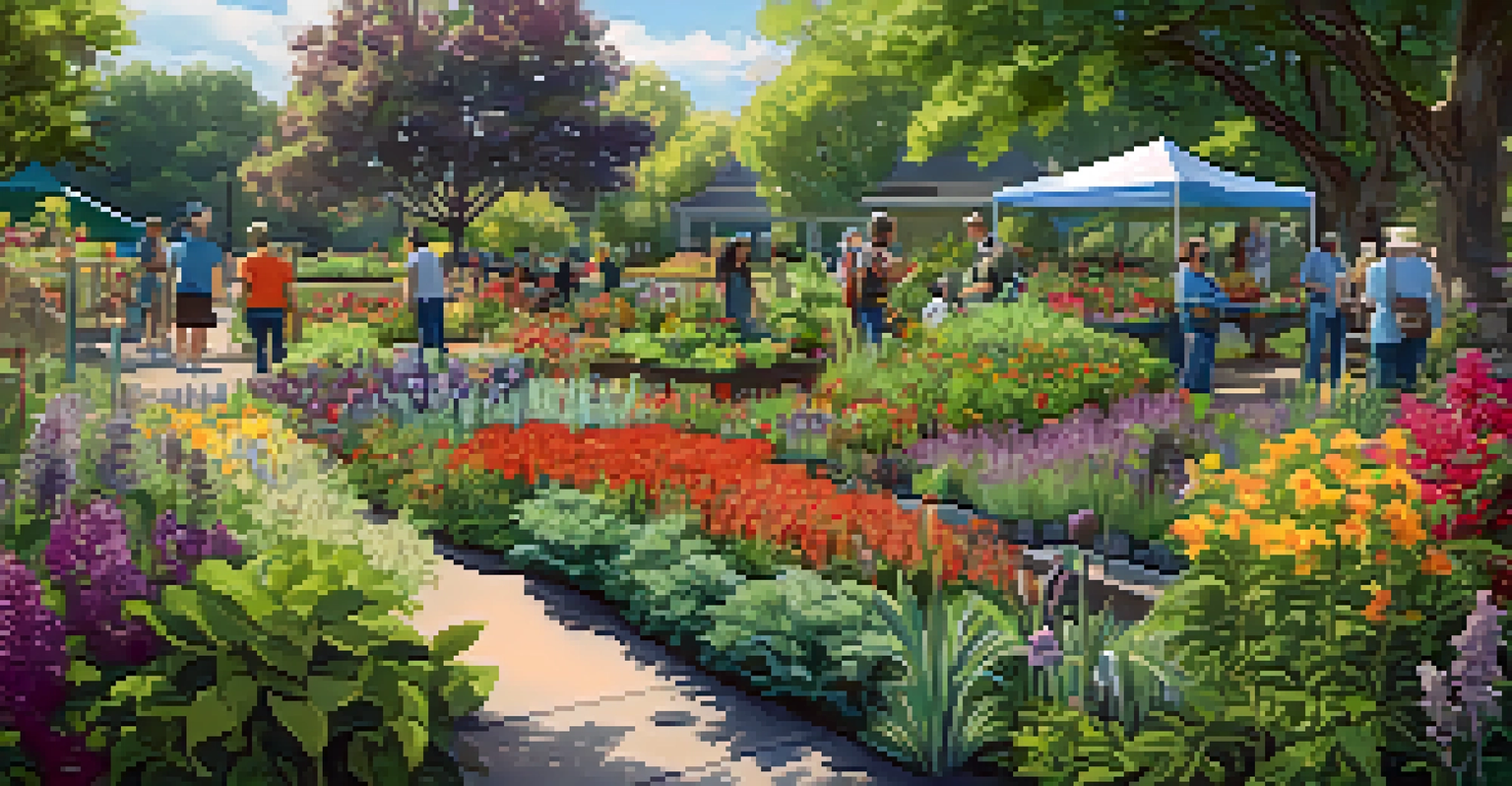The Impact of Native Plants on Water Conservation Practices

Understanding Native Plants and Their Importance
Native plants are species that have evolved in a specific region over thousands of years. They are adapted to local climates, soil types, and ecosystems, making them vital for maintaining ecological balance. By supporting local wildlife, native plants contribute to biodiversity and create habitats that sustain various species.
The greatest threat to our planet is the belief that someone else will save it.
Choosing native plants for landscaping is not just a trend; it's a sustainable practice that benefits the environment. These plants require less water and maintenance compared to non-native varieties, which often need more resources to thrive. When we incorporate native species into our gardens, we encourage healthier ecosystems right in our own backyards.
For instance, consider the beauty of a native wildflower garden. It not only flourishes with minimal care but also attracts pollinators like bees and butterflies, which are crucial for our food supply. This harmonious relationship highlights the essential role of native plants in promoting a balanced and sustainable environment.
How Native Plants Conserve Water Effectively
Native plants have deep root systems that allow them to access moisture from deeper soil layers. This characteristic makes them more resilient during dry periods, significantly reducing the need for supplemental watering. In contrast, many non-native plants require regular irrigation, which can lead to water wastage.

Furthermore, the natural adaptation of native plants means they are less likely to suffer from pests and diseases, which often necessitate the use of chemical treatments and additional water. By choosing native species, homeowners can create flourishing landscapes that are both beautiful and water-efficient.
Native Plants Boost Biodiversity
Native plants support local wildlife and contribute to biodiversity, creating habitats that sustain various species.
An example can be seen in the use of native grasses, which not only require less water but also help with soil erosion control. Their ability to hold soil in place reduces runoff, allowing more water to infiltrate the ground and replenish local aquifers. This demonstrates the direct impact of native plants on water conservation practices.
The Role of Native Plants in Soil Health
Healthy soil is crucial for effective water conservation, and native plants play an essential role in maintaining soil health. Their diverse root structures help to aerate the soil, allowing water to penetrate more deeply and effectively. This not only benefits the plants themselves but also improves overall soil structure.
Nature does not hurry, yet everything is accomplished.
Moreover, native plants contribute organic matter to the soil as they grow and decompose. This organic material enhances soil fertility and its ability to retain moisture, which is especially important in times of drought. By enriching the soil, native plants create a self-sustaining ecosystem that conserves water naturally.
For example, planting a variety of native shrubs and perennials can create a rich layer of mulch on the ground as they shed leaves and branches. This natural mulch helps to keep the soil moist, reducing the need for additional watering and fostering a healthier environment for both plants and animals.
The Ecosystem Benefits of Native Plant Landscaping
Landscaping with native plants not only conserves water but also supports local ecosystems. These plants provide food and shelter for a variety of wildlife, including birds, insects, and small mammals. This increased biodiversity helps create a balanced environment, which is essential for the health of our planet.
In addition, native plants often require fewer chemical fertilizers and pesticides, reducing harmful runoff that can pollute nearby water sources. By minimizing chemical use, we protect our waterways and promote healthier ecosystems. This is a win-win for both nature and our neighborhoods.
Water Conservation with Native Plants
Native plants have deep root systems that reduce the need for supplemental watering, making them ideal for water-efficient landscaping.
Imagine a garden buzzing with life, where native bees thrive among colorful flowers, and birds find shelter in dense shrubs. This dynamic ecosystem not only enhances our outdoor spaces but also plays a critical role in water conservation by maintaining the natural balance of our local environments.
Community Involvement in Native Plant Initiatives
Community involvement is key to promoting the use of native plants in water conservation efforts. Local organizations and gardening clubs often host workshops and events to educate residents about the benefits of native landscaping. These initiatives encourage everyone to take part in creating sustainable environments.
Working together, communities can establish native plant gardens in parks and public spaces, enhancing the beauty and ecological health of their neighborhoods. Such projects not only beautify the area but also serve as educational tools for residents and visitors alike, showcasing the importance of native plants.
For instance, a community garden featuring a variety of native species can inspire individuals to plant their own native gardens, creating a ripple effect that promotes water conservation on a larger scale. When people see the positive impact of these gardens, they are more likely to adopt similar practices in their own homes.
Overcoming Challenges in Native Plant Adoption
Despite the numerous benefits of using native plants, there can be challenges to their widespread adoption. Misconceptions about the aesthetics of native landscaping often deter homeowners from making the switch. However, with the right knowledge and resources, these concerns can be addressed effectively.
Many people believe that native plants are dull or unattractive, but they can be just as vibrant and colorful as non-native varieties. By showcasing successful native gardens, we can change these perceptions and demonstrate how beautiful and diverse native landscapes can be.
Community Benefits of Native Landscaping
Involving the community in native plant initiatives enhances local ecosystems and encourages sustainable practices in gardening.
Additionally, there may be a lack of access to native plants in some areas. However, local nurseries and conservation organizations are increasingly recognizing the demand for native species. By supporting these businesses and advocating for more native plant options, we can overcome barriers and promote water conservation through native landscaping.
The Future of Water Conservation with Native Plants
As climate change continues to impact water availability, the importance of native plants in conservation practices will only grow. By integrating native landscaping into urban planning and community designs, we can create more resilient environments that thrive even in challenging conditions. This proactive approach is essential for sustainable development.
Moreover, ongoing research into the benefits of native plants will help refine water conservation strategies. By understanding how different native species interact with their environments, we can optimize their use in landscaping and conservation efforts. This scientific approach will pave the way for more effective practices in the future.

Ultimately, the future of water conservation lies in embracing the power of native plants. By fostering a deeper understanding and appreciation for these local species, we can create thriving ecosystems that not only conserve water but also enrich our lives and communities.